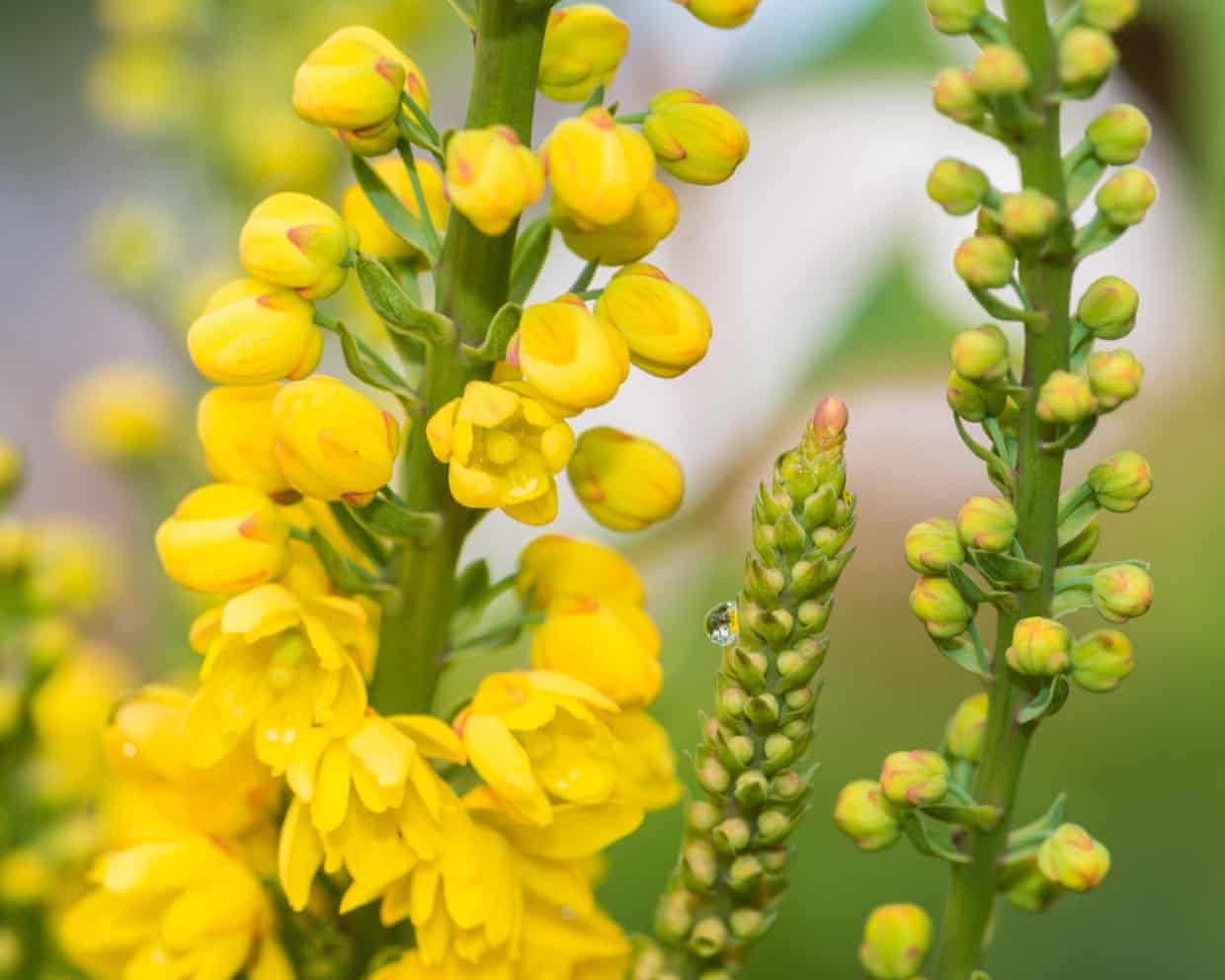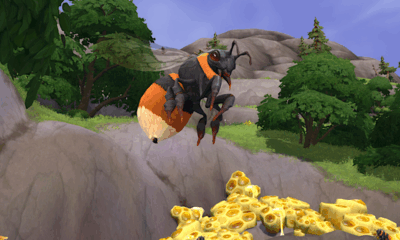Science
Flowers Use Surprising Tactics to Attract Pollinators

Flowers exhibit remarkable strategies to engage pollinators, particularly through their male reproductive structures, known as stamens. Recent research highlights the intricate movements and adaptations of these plant parts, which can significantly influence the behavior of visiting insects. This interplay not only benefits the flowers but also enhances cross-pollination, a vital process for plant reproduction.
Touch-Sensitive Movements of Stamens
Many plant species, including those in the genera Berberis and Mahonia, have evolved touch-sensitive stamens that react quickly to insect visitors. As these insects approach to feed on nectar, the stamens bend and deliver pollen directly onto the insect’s body. This mechanism serves a dual purpose: it ensures that the flower does not waste its resources by scaring away the insect after a brief visit and encourages the transfer of pollen to other flowers.
The rapid movements of stamens can be endlessly repeated, maximizing the chances of successful pollination. When insects, such as bees and butterflies, encounter this unexpected pollen shower, they are likely to leave the flower and visit another, where they may deposit the pollen they collected on receptive female organs, thus facilitating cross-pollination.
Unique Mechanisms in Specialized Flowers
Some flowers employ even more dramatic tactics to ensure their pollen is effectively transferred to pollinators. The orchid Catasetum, for instance, greets its visitors with a forceful release of sticky pollen bags. When an insect lands on the flower, the pollen bags shoot out at high speed, attaching themselves to the insect’s body. This knockout tactic not only ensures efficient pollen attachment but also propels the insect away from the flower, prompting it to seek out other blooms.
Another fascinating example comes from Stylidium, commonly known as triggerplants, native to Australia. These plants possess a club-shaped organ that swings through an impressive 180 degrees when touched. This rapid movement occurs in approximately 0.01 seconds, delivering pollen to the insect while simultaneously receiving any pollen the insect might be carrying. Once the pollen exchange is complete, the trigger resets quickly, preparing for the next visitor.
These adaptations highlight the dynamic relationships between flowers and their pollinators. As plants continue to evolve, understanding these mechanisms provides insight into the complexities of ecosystem interactions. The efficiency of these processes underscores the importance of biodiversity and the role of pollinators in maintaining healthy plant communities.
In conclusion, the remarkable behaviors displayed by flowers in their interactions with pollinators not only showcase the beauty of nature but also reveal crucial ecological dynamics. As researchers continue to explore these interactions, they shed light on the significance of preserving these species to ensure the sustainability of our ecosystems.
-

 Education3 months ago
Education3 months agoBrandon University’s Failed $5 Million Project Sparks Oversight Review
-

 Science4 months ago
Science4 months agoMicrosoft Confirms U.S. Law Overrules Canadian Data Sovereignty
-

 Lifestyle3 months ago
Lifestyle3 months agoWinnipeg Celebrates Culinary Creativity During Le Burger Week 2025
-

 Health4 months ago
Health4 months agoMontreal’s Groupe Marcelle Leads Canadian Cosmetic Industry Growth
-

 Science4 months ago
Science4 months agoTech Innovator Amandipp Singh Transforms Hiring for Disabled
-

 Technology4 months ago
Technology4 months agoDragon Ball: Sparking! Zero Launching on Switch and Switch 2 This November
-

 Education4 months ago
Education4 months agoRed River College Launches New Programs to Address Industry Needs
-

 Technology4 months ago
Technology4 months agoGoogle Pixel 10 Pro Fold Specs Unveiled Ahead of Launch
-

 Business3 months ago
Business3 months agoRocket Lab Reports Strong Q2 2025 Revenue Growth and Future Plans
-

 Technology2 months ago
Technology2 months agoDiscord Faces Serious Security Breach Affecting Millions
-

 Education4 months ago
Education4 months agoAlberta Teachers’ Strike: Potential Impacts on Students and Families
-

 Education3 months ago
Education3 months agoNew SĆIȺNEW̱ SṮEȽIṮḴEȽ Elementary Opens in Langford for 2025/2026 Year
-

 Science4 months ago
Science4 months agoChina’s Wukong Spacesuit Sets New Standard for AI in Space
-

 Business4 months ago
Business4 months agoBNA Brewing to Open New Bowling Alley in Downtown Penticton
-

 Business4 months ago
Business4 months agoNew Estimates Reveal ChatGPT-5 Energy Use Could Soar
-

 Technology4 months ago
Technology4 months agoWorld of Warcraft Players Buzz Over 19-Quest Bee Challenge
-

 Business4 months ago
Business4 months agoDawson City Residents Rally Around Buy Canadian Movement
-

 Technology4 months ago
Technology4 months agoFuture Entertainment Launches DDoD with Gameplay Trailer Showcase
-

 Technology2 months ago
Technology2 months agoHuawei MatePad 12X Redefines Tablet Experience for Professionals
-

 Top Stories3 months ago
Top Stories3 months agoBlue Jays Shift José Berríos to Bullpen Ahead of Playoffs
-

 Technology4 months ago
Technology4 months agoGlobal Launch of Ragnarok M: Classic Set for September 3, 2025
-

 Technology4 months ago
Technology4 months agoInnovative 140W GaN Travel Adapter Combines Power and Convenience
-

 Science4 months ago
Science4 months agoXi Labs Innovates with New AI Operating System Set for 2025 Launch
-

 Technology4 months ago
Technology4 months agoNew IDR01 Smart Ring Offers Advanced Sports Tracking for $169










